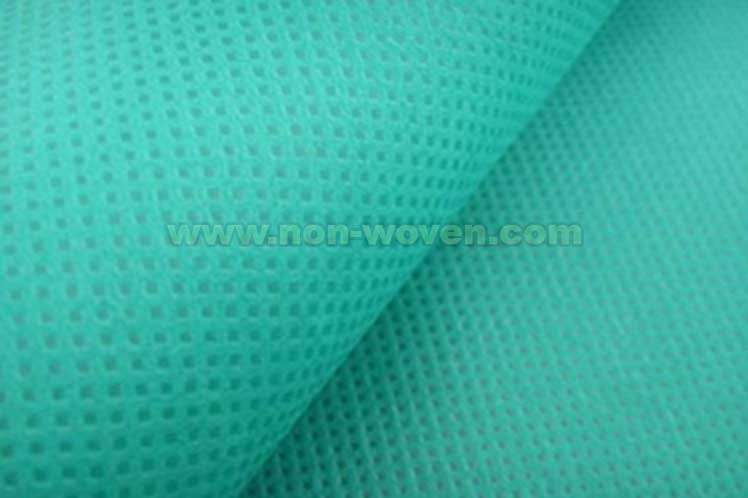Introduction
A non woven fabric is a fabric that is formed by bonding or intertwining of fibers without the use of spinning or weaving. The term “non woven” is used to designate both a type of fabric and the method of fabric production. Non woven fabrics are often used in place of woven fabrics, and are used in a variety of applications, including:
– Upholstery
– Filters
– Geotextiles
– Hygiene products
– Reinforcements
– Carpet backing
Non woven fabrics are manufactured by a variety of processes, including:
– Spunbonding
– Melt blowing
– Needle punching
To learn more about the non woven fabric meaning and its applications, read on!
What is non woven fabric?
Non woven fabrics are created by bonding or intertwining fibers without the use of spinning or weaving. This can be achieved through a variety of processes, including spunbonding, melt blowing, and needle punching. Non woven fabrics typically consist of one or more layers of fibrous material and are distinct from textiles in which fibers are interlaced in a pattern. Non woven fabrics are found in many everyday items, such as diapers and grocery bags, and are also used in several industries, including medical, automotive, and construction. As its name implies, non woven fabric is not constructed with any type of weaving or knitting. Instead, individual fibers are either melted together, spun together, glued together, or heat-bonded together to form a sheet or fabric. Non woven fabric is porous, lightweight, soft, and easily cut and sewn, making it an ideal material for a wide range of applications. Its malleability and strength make it popular in markets ranging from healthcare to geotextiles.learn more(wikipedia)
The benefits of non woven fabric
Non woven fabric offers some advantages over other fabrics, including strength, malleability, breathability, absorbency, and cost-effectiveness. As a result, non woven fabrics are used in a variety of industries, and for many different applications. Non woven fabric is lightweight and malleable and is therefore ideal for applications where flexibility and conformity are needed, such as medical or hygiene products and geotextiles. The fabric is strong enough to be cut and sewn, yet soft and breathable enough to be used as a material for surgical gowns, diapers, and bandages. Non woven fabrics also offer excellent water absorption and quick-drying, making them ideal for use in applications such as wipes and floor mops. Moreover, non woven fabrics are cost-effective and environmentally friendly alternatives to other fabrics. The process for making non woven fabrics does not require the same amount of energy and resources as weaving or knitting fabrics do, and thus it is cheaper to manufacture. Furthermore, non woven fabrics are lightweight and durable and can be reused and recycled, thus reducing the strain on landfills.
The many uses of non woven fabric
Non woven fabrics are used in a wide range of industries and applications, including:
– Upholstery
– nonwoven fabrics are often used as an upholstery material due to their lightweight, malleable properties, and cost-effectiveness.
– Filters
– non woven fabrics can be used as a filtration material due to their strength and porosity.
– Geotextiles
– non woven fabrics are often used as a geotextile material due to their breathability, absorbency, and strength.
– Hygiene products
– non woven fabrics are used in a variety of hygiene and medical products, such as bandages, diapers, and surgical gowns.
– Reinforcements
– non woven fabrics are ideal for reinforcing and underlining materials, such as leather and other textiles, as they provide additional strength without adding any bulk.
– Carpet backing
– non woven fabrics are used as carpet backing material due to their porosity and high strength-to-weight ratio.
Non woven fabric in the medical industry
Non woven fabrics are a popular choice for medical and hygiene products due to their strength and breathability. The fabric is ideal for use in a wide range of medical and hygiene products, including bandages, surgical gowns, diapers, and first aid kits. Non woven fabrics are specifically designed to provide comfort and safety. The fabric’s breathability and non-abrasive texture make it ideal for use with sensitive skin, while its strength and malleability allow it to conform to the body. Non woven fabric is also non-allergenic, which makes it safe to use with people who may have allergies to other fabrics. Non woven fabric is also widely used in the production of gowns used in the medical and hygiene industry. Non woven gowns are lightweight and impermeable, and can help protect medical personnel from viruses and other hazardous particles. Thus, non woven fabric ensures that medical personnel and patients remain safe and comfortable during procedures.
Non woven fabric in the automotive industry
Non woven fabrics are also used in the automotive industry. Non woven fabric is used in the manufacture of vehicle parts, such as seat covers and door panels. The fabric’s breathability and water absorption properties make it a comfortable and durable material for the interior of a car, while its low cost and light weight make it ideal for use in the production of exterior parts. Another use of non woven fabric in the automotive industry is in soundproofing materials, as the fabric insulates against sound and heat. Non woven fabric is also widely used in the manufacturing of automotive filters, due to its ability to trap dirt and other particles.
Non woven fabric in the construction industry
Non woven fabrics are widely used in the construction industry, due to their strength and breathability. Non woven fabrics can be used to make geotextiles, which are fabrics used to reinforce and protect soils, while also providing drainage and filtration. Another use of non woven fabric in construction is the use of reinforcing fabrics, which are used to strengthen and reinforce concrete and other cement composite materials. Moreover, non woven fabrics can be used to make lightweight concrete, which is used in the construction of buildings and bridges due to its flexibility and strength. Furthermore, non woven fabrics are used in the production of roofing and siding materials, and as an insulation material in walls, due to their breathability and water absorption properties.
Non woven fabric in the filtration industry
Non woven fabrics are also used in a variety of filtration applications, such as air and water filtration. Non woven fabrics can absorb large amounts of liquid, and are thus ideal for use as a filtration media. Non woven fabrics can also be used to capture and trap dirt and

